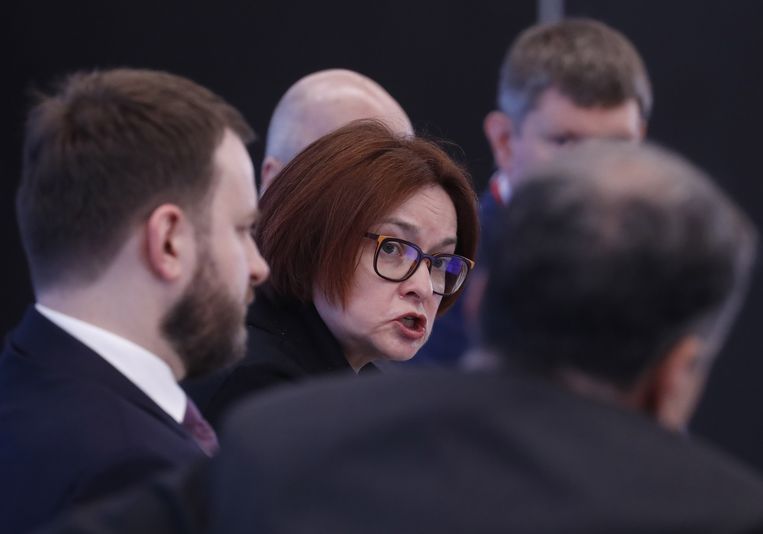The exchange rate is said to be a barometer of a country’s heat, reflecting its economic health in a single figure. In the case of Russia, not so well because of the war in Ukraine. This year alone, the ruble has lost about a quarter of its value against the dollar.
The doctor on duty is Elvira Nabiullina, President of the Central Bank of Russia. After an emergency meeting on Tuesday, he suddenly raised the interest rate from 8.5 to 12 percent, a remedy that was supposed to support the ruble’s falling rate. It passed the 100-ruble-to-dollar mark last week, for the first time since March last year.
The central bank said in a statement that the interest rate hike aims to “reduce risks to price stability.” The Russian Central Bank has an inflation target of 4 percent. At the beginning of August, inflation was 4.4 percent.
26 billion euro deficit
Currency depreciation has been on the rise for several months, something Nabuelina attributes to high government spending and a labor shortage. In the first seven months of this year, there was a budget deficit of 26 billion euros, while in the same period last year, thanks to the exceptionally high income from oil and gas, there was still a surplus. And the soldiers who fight cannot work.
A high rate of interest should make domestic savings more attractive and thus discourage consumption. Bad news for the economy, which is already in the doldrums due to the international sanctions imposed on Russia. Gross domestic product is estimated to be 8 percent lower by 2026 than if the war had not occurred.
“The recent acceleration in ruble weakness may indicate cracks in capital controls, and money is moving faster out of Russia as a result,” Ulrich Luchtmann, currency strategist at Commerzbank, told Bloomberg news agency. “Raising the rate will hardly convince people who have the ability to move their money out of Russia not to do so.”
Another way the Russian Central Bank can support the ruble is by tapping into its currency reserves. Nabiullina said a week ago that she did not want to make that choice. This firepower is limited anyway. There are about 275 billion euros of currency reserves in accounts abroad, which the central bank can no longer access as a result of the imposed sanctions.
Criticism from the Kremlin
The Kremlin criticized the central bank’s “soft” policy on Monday. According to Maxim Oreshkin, economic adviser to President Vladimir Putin, Nabiullina and her colleagues are responsible for the ruble’s weakness. Their policies would have resulted in a lot of loans, and an injection of a lot of money into the economy. Oreshkin called for a “strong ruble.” A few hours later, the central bank announced the emergency meeting, raising questions about its independence.
The decision to raise interest rates has not only an economic side, but also a political one, says Stewart Cole, chief economist at Equiti Capital. “The weakening of the ruble raises the risk of higher inflation, but it also sends a signal to the Russian public about the costs of invading Ukraine.”
Analysts believe that the Russian Central Bank can now stop the collapse of the ruble, but this will not continue in the long term. “As long as the war continues, things are only going to get worse for the Russian economy and the ruble,” said Timothy Ash, an asset strategist at BlueBay. Raising interest rates will not solve anything. It can only temporarily slow the pace of ruble depreciation at the cost of slowing economic growth. The main problem is the war and the sanctions that must be solved.

“Total coffee specialist. Hardcore reader. Incurable music scholar. Web guru. Freelance troublemaker. Problem solver. Travel trailblazer.”







More Stories
Bitcoin price rises after new jobs data from US
European stock markets open higher | beursduivel.be
Russia’s oil imports to China decline